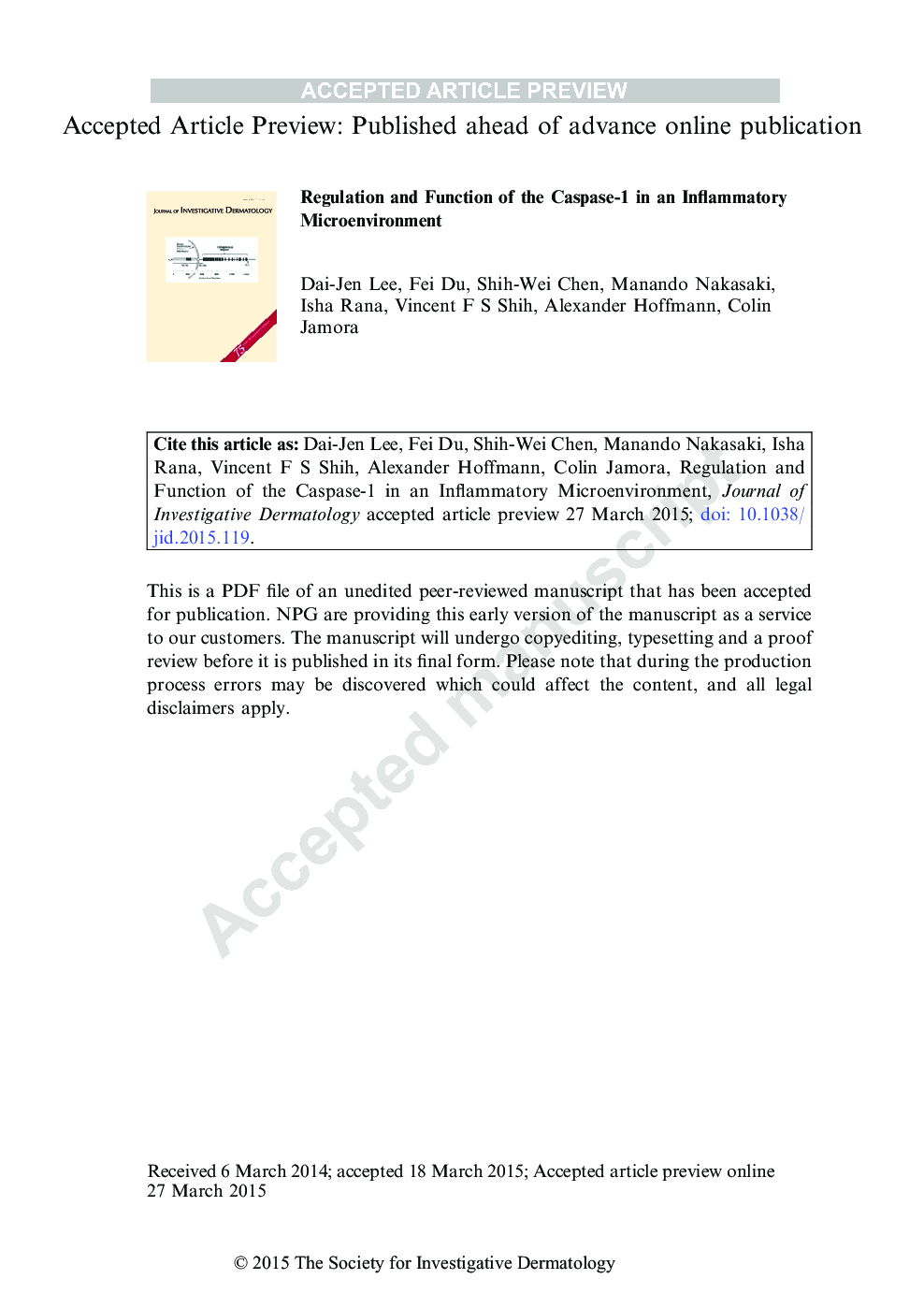| Article ID | Journal | Published Year | Pages | File Type |
|---|---|---|---|---|
| 6075468 | Journal of Investigative Dermatology | 2012 | 31 Pages |
Abstract
The inflammasome is a complex of proteins that has a critical role in mounting an inflammatory response in reply to a harmful stimulus that compromises the homeostatic state of the tissue. The NLRP3 inflammasome, which is found in a wound-like environment, is comprised of three components: the NLRP3, the adaptor protein ASC and caspase-1. Interestingly, although ASC levels do not fluctuate, caspase-1 levels are elevated in both physiological and pathological conditions. Despite the observation that merely raising caspase-1 levels is sufficient to induce inflammation, the crucial question regarding the mechanism governing its expression is unexplored. We found that, in an inflammatory microenvironment, caspase-1 is regulated by NF-κB. Consistent with this association, the inhibition of caspase-1 activity parallels the effects on wound healing caused by the abrogation of NF-κB activation. Surprisingly, not only does inhibition of the NF-κB/caspase-1 axis disrupt the inflammatory phase of the wound-healing program, but it also impairs the stimulation of cutaneous epithelial stem cells of the proliferative phase. These data provide a mechanistic basis for the complex interplay between different phases of the wound-healing response in which the downstream signaling activity of immune cells can kindle the amplification of local stem cells to advance tissue repair.
Related Topics
Health Sciences
Medicine and Dentistry
Dermatology
Authors
Dai-Jen Lee, Fei Du, Shih-Wei Chen, Manando Nakasaki, Isha Rana, Vincent F.S. Shih, Alexander Hoffmann, Colin Jamora,
